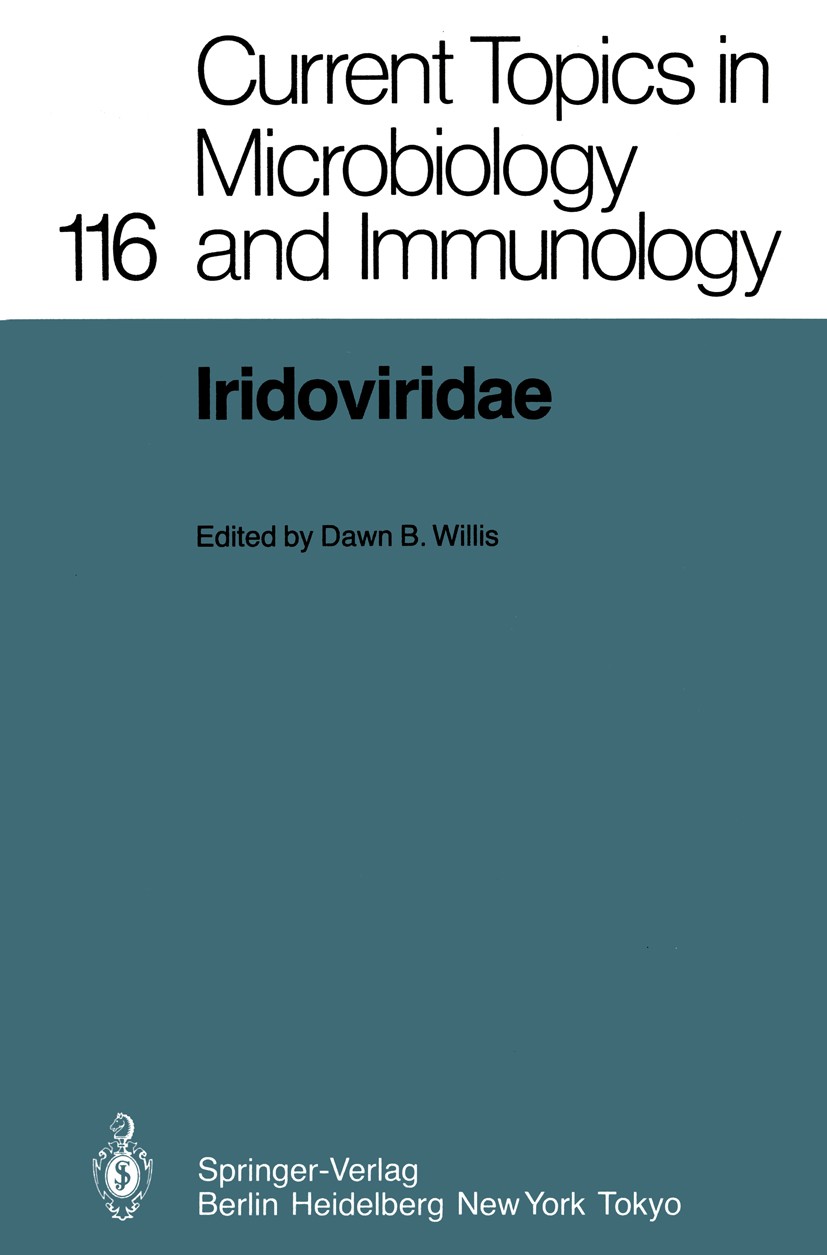| 书目名称 | Iridoviridae | | 编辑 | Dawn B. Willis | | 视频video | http://file.papertrans.cn/476/475325/475325.mp4 | | 丛书名称 | Current Topics in Microbiology and Immunology | | 图书封面 |  | | 描述 | In 1976 the International Committee on Taxonomy of Vi ruses (ICTV) created the family Iridoviridae to encompass several different vertebrate and invertebrate viruses that did not fit into any of the other established groups. The unifying features of this new family were (1) polyhedral symmetry; (2) large (approximately 170 kilobase pairs), lin ear, double-stranded DNA genomes; and (37) a cytoplas mic site of replication. The name "iridovirus" was derived from the observa tion that larvae infected with many of the insect viruses, as well as purified pellets of these viruses, glowed with a blue or green iridescence - presumably due to the Bragg effect of the viral crystals. However, none of the vertebrate "iridoviruses" displayed this particular characteristic. An attempt was made to substitute the more descriptive name of "icosahedral cytoplasmic deoxyribovirus", but not only was this term too unwieldy, it also did not conform to the latinized nomenclature the ICTV wished to adopt. So, for both historical and esthetic reasons, "Iridoviridae" was adopted as a family name, with Iridovirus as the genus represented by the type 1 iridescent insect virus, Tipula iri descent virus. At | | 出版日期 | Book 1985 | | 关键词 | cytoplasm; taxonomy; virus | | 版次 | 1 | | doi | https://doi.org/10.1007/978-3-642-70280-8 | | isbn_softcover | 978-3-642-70282-2 | | isbn_ebook | 978-3-642-70280-8Series ISSN 0070-217X Series E-ISSN 2196-9965 | | issn_series | 0070-217X | | copyright | The Editor(s) (if applicable) and The Author(s), under exclusive license to Springer-Verlag GmbH, DE |
The information of publication is updating

|
|
 |Archiver|手机版|小黑屋|
派博传思国际
( 京公网安备110108008328)
GMT+8, 2026-1-2 12:20
|Archiver|手机版|小黑屋|
派博传思国际
( 京公网安备110108008328)
GMT+8, 2026-1-2 12:20


